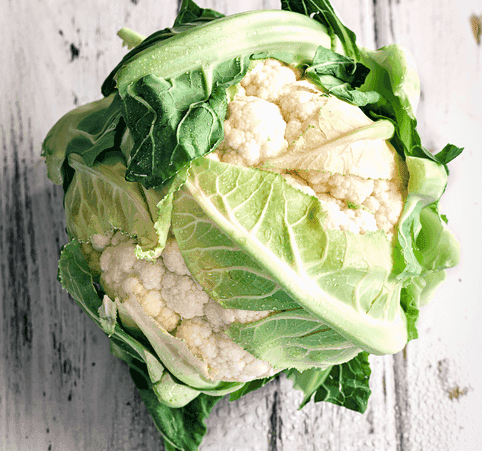Cancer Fighting Cauliflower Fried ‘Rice’
by Amylee Amos PhD, RDN, IFMCPRecipes
Cauliflower is the new kale. Well, if nothing else, cauliflower is the trendy, exciting vegetable of the hour. Apparently, you can use cauliflower for anything and everything- pulsed in a food processor and used as a substitute for rice, pureed and used as the basis of a pizza crust, frozen and used in place of ice in smoothies, mashed and used as faux mashed potatoes. The list goes on and on. And at the Amos Institute, we think that using all of this cauliflower is great! It’s mostly great because by using cauliflower for all of the above purposes, you’re adding a serving (or several servings) of veggies to your diet. In other words, just because we love using cauliflower instead of rice in the dish featured below doesn’t mean regular rice is a bad thing. In many cases, rice can certainly be part of a very health-promoting nutrition plan. But for those of you trying to achieve mild ketosis, rice is probably not a prominent part of your nutrition plan. For others, rice may be perfectly acceptable, but swapping a vegetable in its place just ups the nutrition content of the dish. So whatever your reason for using cauliflower as the multi purpose veggie it is- we support you!
This dish is a twist on fried rice, but it packs in the vegetables. Beyond that, it packs in the cruciferous vegetables. Cauliflower and cabbage fall into this category of cruciferous vegetables (along with broccoli, brussels sprouts, kohlrabi, arugula, turnip, collard greens, etc.), and these veggies have potent anticancer compounds called glucosinolates. These glucosinolates, along with other compounds found in cruciferous vegetables, protect cells from damage by upregulating detoxification pathways, promoting natural cell death, and slowing tumor growth (1). A diet rich in cruciferous vegetables helps protect against cancer and some of the other chronic diseases of aging based on epidemiological evidence (2). Integrate this recipe into your regular lunch or dinner routine to reap the benefits of cruciferous veggies.
This recipe serves 2
Ingredients:
- 1 Tbsp. coconut oil
- 1 onion, diced
- 4 cloves garlic, minced
- ½ cup Chinese cabbage, chopped
- 2 carrots, diced
- 2 celery stalks, diced
- 1 tsp. ginger, minced
- 1 head cauliflower, chopped into florets
- 1 pasture raised egg
- 3 Tbsp. Tamari
- ½ Tbsp. probiotic sriracha
- 1 Tbsp. almonds, chopped
- 1 Tbsp. green onion, chopped
Directions:
1. In a large pan, sauté the onion and garlic in coconut oil for about 2 minutes over medium heat.
2. Add the cabbage, carrots, celery, and ginger and sauté 3-5 minutes until softened.
3. Meanwhile, add the cauliflower florets to a food processor and pulse 20-30 seconds until it is a rice-like consistency.
4. Add the riced cauliflower into the pan and stir to mix evenly.
5. Crack the egg into a bowl and whisk well.
6. In the center of the pan, make a small well. Pour in the cracked and whisked egg into the well and start to scramble, slowly incorporating the surrounding vegetable mix until the egg has been scrambled evenly throughout mixture.
7. Add the tamari and probiotic sriracha and mix well. Adjust flavors as needed for extra heat.
8. Top with chopped almonds and green onion.
9. Serve immediately.
References:
- Keck, A.S. & Finley, J.W. (2004). Cruciferous vegetables: cancer protective mechanisms of glucosinolate hydrolysis products and selenium. Integrative Cancer Therapies, 3(1): 5-12.
- Higdon, J. V., Delage, B., Williams, D. E., & Dashwood, R. H. (2007). Cruciferous vegetables and human cancer risk: epidemiologic evidence and mechanistic basis. Pharmacological Research : The Official Journal of the Italian Pharmacological Society, 55(3), 224–236.